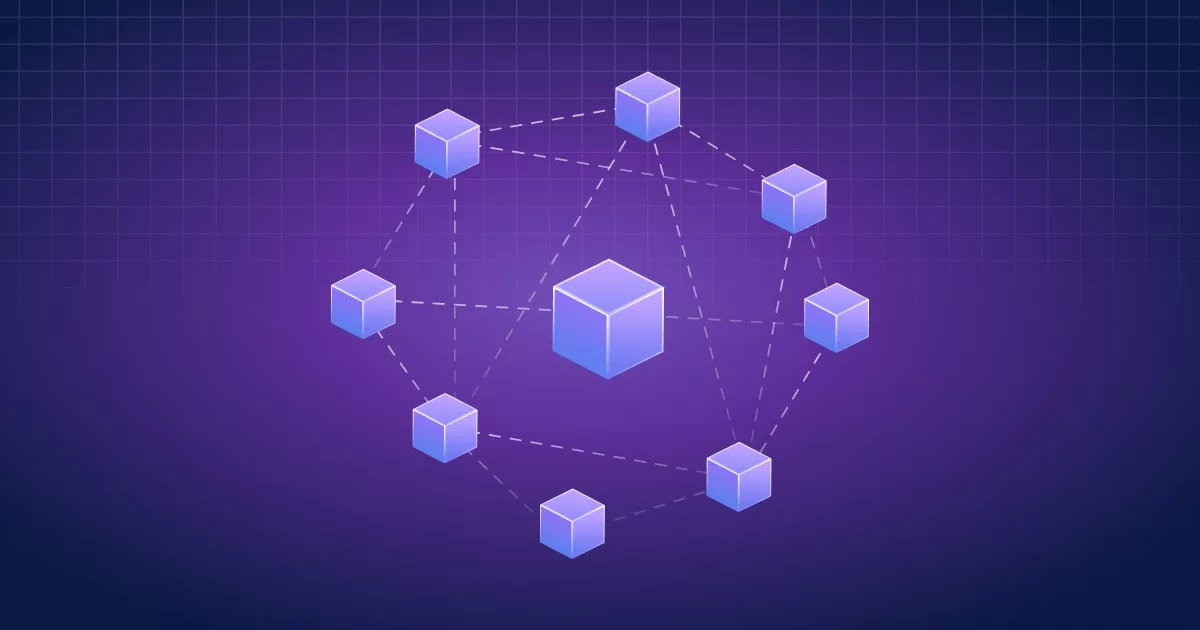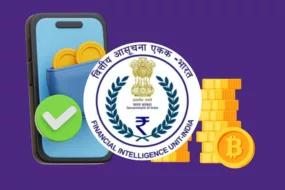
Decentralization refers to the distribution of power, control, or authority away from a central authority or entity. In the context of blockchain technology, decentralization refers to the distribution of computing power and decision-making authority across a network of nodes or participants rather than relying on a centralized authority to govern the network.
It is a core principle of many cryptocurrencies such as Bitcoin and Ethereum, as well as other decentralized applications (dApps) such as DeFi platforms and supply chain management systems.
Benefits of Decentralization in Blockchain
Blockchain technology offers various benefits by virtue of being decentralized:
1. Security and Resilience
Decentralization offers security and resilience benefits in blockchain. It ensures that there is no single point of failure in the system. This makes it challenging for attackers to compromise the system. Additionally, the distributed nature of the blockchain means that any attack on a single node or participant in the network will not affect the entire system’s integrity.
2. Transparency and Accountability
Decentralization in blockchain also offers transparency and accountability. Since there is no central authority controlling the system, every participant in the network has access to the same information, and transactions are recorded on a public ledger. This makes it easier to track and audit transactions, reducing the risk of fraud and corruption.
3. Reduced Costs and Intermediaries
Decentralization in blockchain also reduces costs and intermediaries. In traditional financial systems, intermediaries such as banks and other financial institutions play a crucial role in facilitating transactions. However, in a decentralized blockchain system, intermediaries are not required, reducing transaction fees and eliminating associated costs.
4. Openness and Innovation
Finally, decentralization in blockchain also promotes openness and innovation. The absence of a central authority and the open-source nature of blockchain technology encourage developers and innovators to experiment and develop new solutions. This leads to a more dynamic and innovative ecosystem that benefits the entire community.
Key Features of Decentralized Blockchain Networks
1. Distributed Ledgers
One of the key features of decentralized blockchain networks is the use of distributed ledgers. A distributed ledger is a database that is spread across a network of computers, rather than being controlled by a single central authority. Each computer on the network has a copy of the ledger, which is constantly updated with new transactions and information.
In a decentralized blockchain network, the distributed ledger is used to record all transactions that occur on the network. Because the ledger is distributed, it is more secure than a centralized ledger because it cannot be easily manipulated or hacked.
2. Consensus Protocols
Another key feature of decentralized blockchain networks is the use of consensus protocols. Consensus protocols are used to ensure that all computers on the network agree on the state of the distributed ledger. There are several different consensus protocols used in blockchain networks, including proof of work (PoW), proof of stake (PoS), and delegated proof of stake (DPoS).
3. Decentralized Applications (dApps)
Decentralized applications, or dApps, are another key feature of decentralized blockchain networks. dApps are applications that run on a blockchain network, rather than on a centralized server. Because dApps are decentralized, they are more resistant to censorship and are more secure than traditional applications.
Some examples of dApps include decentralized marketplaces, decentralized social networks, and decentralized file storage systems.
4. Smart Contracts
Smart contracts are computer programs that are stored on a blockchain network. They are designed to automatically execute when certain conditions are met. For example, a smart contract could be programmed to automatically transfer funds from one account to another when a certain event occurs.
Smart contracts are a key feature of decentralized blockchain networks because they enable complex transactions to be executed automatically without the need for intermediaries such as banks or lawyers.
Centralized Vs. Decentralized Systems in Blockchain
Centralized systems refer to a system where all decision-making and control are in the hands of a central authority or organization. In contrast, decentralized systems are characterized by a lack of central control, where decision-making and control are distributed among a network of nodes.
In the context of blockchain technology, centralized systems are similar to traditional systems where a central authority or entity controls the network. Decentralized systems are designed to eliminate the need for intermediaries and rely on a peer-to-peer network to validate transactions and maintain the ledger.
Here are some key differences between centralized and decentralized systems:
- Control: In a centralized system, all control is in the hands of a central authority or organization, while in a decentralized system, control is distributed among a network of nodes.
- Security: Centralized systems are more susceptible to security breaches as they have a single point of failure. In contrast, decentralized systems are more secure as they rely on a distributed network of nodes to validate transactions.
- Transparency: Centralized systems can lack transparency as there is no way to verify the accuracy of the data or the decisions made by the central authority. Decentralized systems, on the other hand, are transparent as all transactions are visible to everyone on the network.
- Efficiency: Centralized systems can be more efficient as decisions can be made quickly and easily. Decentralized systems, however, can be slower as they require consensus among the nodes to validate transactions.
- Flexibility: Centralized systems can be less flexible as changes need to be approved by the central authority. Decentralized systems are more flexible as changes can be made through consensus among the nodes.
Examples of centralized and decentralized systems in blockchain
Centralized blockchain systems include private blockchains, where a single entity controls the network and can dictate its rules. For example, Ripple, which is managed by Ripple Labs.
Decentralized blockchain systems include public blockchains like Bitcoin and Ethereum, which are maintained by a network of nodes and do not have a single point of control. These systems allow anyone to participate in the network and validate transactions, making them more democratic and transparent.
Challenges of Decentralization in Blockchain
1. Scalability
One of the biggest challenges of decentralization in blockchain technology is scalability. Decentralized systems rely on a network of nodes to validate transactions and maintain the ledger. As more nodes are added to the network, the amount of data that needs to be processed increases, which can lead to slower transaction processing times and higher fees.
Scalability is especially important for public blockchains like Bitcoin and Ethereum, which are designed to be open to anyone. To address this challenge, blockchain developers are exploring various solutions, such as sharding, which involves dividing the network into smaller, more manageable groups of nodes, and layer-two solutions like the Lightning Network, which enables faster and cheaper transactions off-chain.
2. Interoperability
Interoperability is another challenge of decentralization in blockchain technology. With different blockchains and cryptocurrencies being developed, there is a growing need for these systems to communicate and work together seamlessly. This is especially important for enterprise blockchain solutions, where different organizations may be using different blockchain platforms.
To address this challenge, several blockchain projects are working on interoperability solutions, such as cross-chain bridges, atomic swaps, and standardization of protocols. These solutions aim to enable different blockchains to communicate and transfer value across networks.
3. Governance
Governance is also a challenge in decentralized systems. Since decision-making power is distributed among a network of nodes, it is difficult to reach consensus on issues such as protocol upgrades, security, and network rules.
To address this challenge, blockchain projects are exploring various governance models, such as on-chain voting, off-chain signaling, and decentralized autonomous organizations (DAOs).
These models aim to enable decentralized decision-making while ensuring the security and stability of the network. However, finding a governance model that is fair, transparent, and effective remains a challenge for decentralized blockchain systems.
FAQs
1. What is a decentralized blockchain network?
A decentralized blockchain network is a peer-to-peer network that operates on a distributed ledger technology where transactions and data are stored on a decentralized network of computers instead of a central authority or server.
2. How does consensus mechanism work in a decentralized blockchain network?
Consensus mechanisms are the rules and procedures that are followed by nodes on the blockchain network to validate transactions and add new blocks to the blockchain. In a decentralized blockchain network, the consensus mechanism ensures that all the nodes on the network agree on the same version of the ledger.
3. What is the difference between a centralized and a decentralized blockchain network?
The main difference between a centralized and a decentralized blockchain network is that in a centralized network, there is a central authority that controls the network, while in a decentralized network, there is no central authority, and the network is governed by a consensus mechanism agreed upon by the network participants.
4. Can a blockchain network be partially decentralized?
Yes, a blockchain network can be partially decentralized, where some aspects of the network are controlled by a central authority, while other aspects are decentralized. For example, a blockchain network can have a central authority that manages the issuance of tokens, but the actual transfer of tokens can be done on a decentralized network.
5. How does decentralization enhance the security of a blockchain network?
Decentralization enhances the security of a blockchain network by eliminating the need for a central authority or intermediary to control the network. This means that there is no single point of failure, and the network cannot be easily attacked or manipulated. In a decentralized blockchain network, every participant has a copy of the ledger, which makes it difficult for a single participant to modify or manipulate the data. Additionally, the consensus mechanism ensures that transactions are verified and validated by multiple participants, making it difficult for fraudulent transactions to be included in the ledger.





